-
 bitcoin
bitcoin $123963.239194 USD
1.37% -
 ethereum
ethereum $4529.082464 USD
1.07% -
 xrp
xrp $2.983640 USD
0.71% -
 tether
tether $1.000287 USD
0.02% -
 bnb
bnb $1179.874393 USD
2.99% -
 solana
solana $230.633678 USD
1.55% -
 usd-coin
usd-coin $0.999835 USD
0.03% -
 dogecoin
dogecoin $0.254240 USD
1.34% -
 tron
tron $0.341176 USD
0.15% -
 cardano
cardano $0.842285 USD
0.52% -
 hyperliquid
hyperliquid $48.537896 USD
-0.86% -
 chainlink
chainlink $21.863092 USD
-0.84% -
 ethena-usde
ethena-usde $0.999743 USD
-0.07% -
 sui
sui $3.579561 USD
-0.18% -
 stellar
stellar $0.403418 USD
2.67%
What is a dusting attack on Trust Wallet?
A dusting attack floods wallets with tiny crypto amounts to trace transactions and unmask user identities, exploiting blockchain transparency.
Oct 06, 2025 at 06:36 am
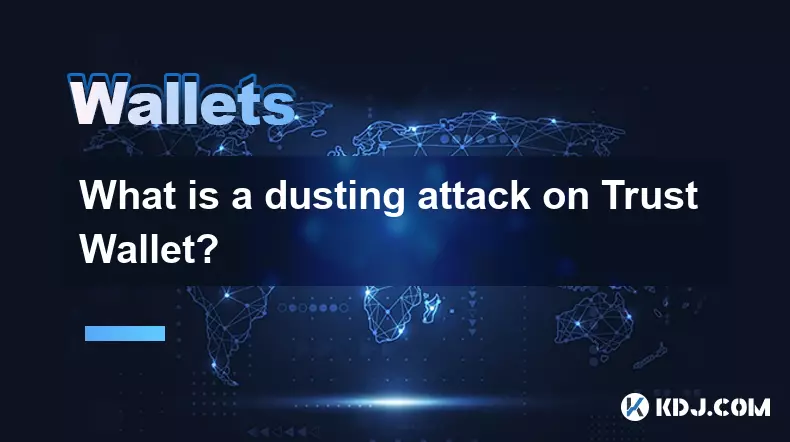
Understanding Dusting Attacks in the Cryptocurrency Space
1. A dusting attack involves sending minuscule amounts of cryptocurrency, often referred to as 'dust,' to thousands or even millions of wallet addresses. These tiny sums are usually worth less than a fraction of a cent but serve a strategic purpose for malicious actors.
2. The intent behind these micro-transactions is not financial gain but rather an attempt to de-anonymize wallet users. By tracking how recipients interact with the dust—such as transferring it, combining it with other funds, or using it in transactions—attackers can map out behavioral patterns.
3. Trust Wallet, like many non-custodial wallets, gives users full control over their private keys. While this enhances security and autonomy, it also means users must remain vigilant against social engineering and blockchain analysis techniques used in dusting attacks.
4. Once attackers link a wallet address to a real-world identity through transaction clustering or metadata leaks, they may launch phishing campaigns, extortion attempts, or sell the information on dark web marketplaces.
5. Blockchain transparency enables anyone to view transaction histories, making it easier for adversaries to monitor movements across addresses. This openness, while beneficial for auditability, creates privacy vulnerabilities exploited during dusting campaigns.
How Dusting Attacks Specifically Target Trust Wallet Users
1. Trust Wallet supports multiple blockchains including Binance Smart Chain, Ethereum, and Bitcoin, all of which are susceptible to traceable transactions. When a user receives dust on any of these networks, the transaction becomes part of the public ledger.
2. Attackers often use automated scripts to distribute dust across popular wallet formats known to be associated with consumer-grade applications like Trust Wallet. Since Trust Wallet generates standard address formats, identifying potential targets at scale is relatively straightforward.
3. If a Trust Wallet user unknowingly spends the dust along with legitimate funds, transaction graph analysis tools can cluster inputs and outputs, potentially revealing spending habits, linked addresses, and even approximate wealth levels.
4. Some attackers pair dusting with fake token approvals or malicious dApp links sent via direct messages, increasing the likelihood that a recipient will interact with the compromised environment. Trust Wallet’s support for decentralized applications expands the attack surface.
5. Although Trust Wallet does not expose personal data unless voluntarily shared by the user, behavioral footprints left on-chain can still lead to identification when combined with off-chain intelligence such as IP logs or exchange KYC records.
Mitigation Strategies Against Dusting in Trust Wallet
1. Users should avoid spending or moving dust transactions whenever possible. Leaving the dust untouched prevents linkage between unrelated addresses through input consolidation.
2. Enabling wallet address labeling and segmentation helps isolate suspicious activity. Creating separate wallets for different purposes—such as trading, staking, and long-term storage—reduces the risk of cross-contamination.
3. Regularly reviewing incoming transactions allows early detection of unusual micro-transfers. Trust Wallet’s transaction history feature can be used to identify and flag unknown deposits below a certain threshold.
4. Utilizing blockchain analytics tools or privacy-focused services that detect anomalous patterns may alert users before significant interaction occurs. Some third-party platforms offer dust detection alerts based on known attacker signatures.
5. Educating oneself about common attack vectors, including impersonation attempts and fraudulent airdrops, strengthens overall digital hygiene. Awareness remains one of the most effective defenses against coordinated targeting.
Frequently Asked Questions
What should I do if I receive an unexplained small transaction in my Trust Wallet?Ignore it and do not spend or transfer the amount. Mark the transaction as suspicious within your records and consider monitoring related addresses for further anomalies.
Can dust transactions drain my wallet balance?No, receiving dust cannot directly withdraw funds. However, interacting with malicious smart contracts or approving unsafe token allowances after receiving dust could result in unauthorized withdrawals.
Does Trust Wallet automatically filter out dust transactions?Not currently. Trust Wallet displays all on-chain transactions regardless of value. Users must manually inspect and assess unfamiliar deposits.
Are hardware wallets immune to dusting attacks?Hardware wallets provide enhanced security for key management but do not prevent dust from being sent to their associated addresses. On-chain behavior remains visible and analyzable regardless of the storage method.
Disclaimer:info@kdj.com
The information provided is not trading advice. kdj.com does not assume any responsibility for any investments made based on the information provided in this article. Cryptocurrencies are highly volatile and it is highly recommended that you invest with caution after thorough research!
If you believe that the content used on this website infringes your copyright, please contact us immediately (info@kdj.com) and we will delete it promptly.
- BlockDAG, DOGE, HYPE Sponsorship: Crypto Trends Shaping 2025
- 2025-10-01 00:25:13
- Deutsche Börse and Circle: A StableCoin Adoption Powerhouse in Europe
- 2025-10-01 00:25:13
- BlockDAG's Presale Buzz: Is It the Crypto to Watch in October 2025?
- 2025-10-01 00:30:13
- Bitcoin, Crypto, and IQ: When Genius Meets Digital Gold?
- 2025-10-01 00:30:13
- Stablecoins, American Innovation, and Wallet Tokens: The Next Frontier
- 2025-10-01 00:35:12
- NBU, Coins, and Crypto in Ukraine: A New Yorker's Take
- 2025-10-01 00:45:14
Related knowledge
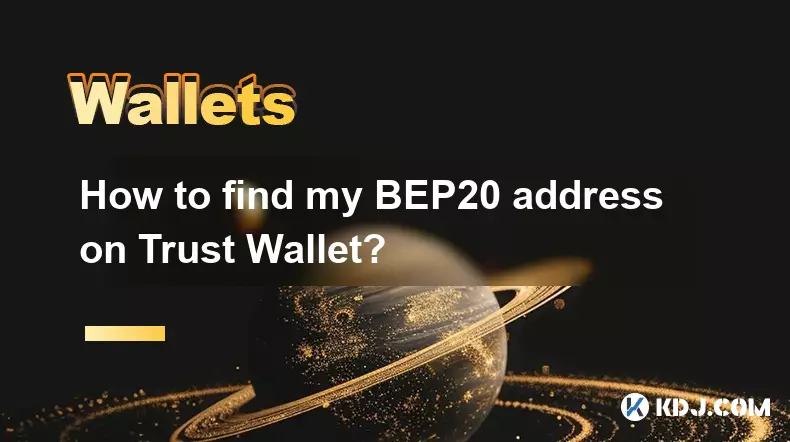
How to find my BEP20 address on Trust Wallet?
Oct 04,2025 at 06:19pm
Understanding BEP20 and Trust Wallet Compatibility1. Trust Wallet is a widely used cryptocurrency wallet that supports multiple blockchain networks, i...
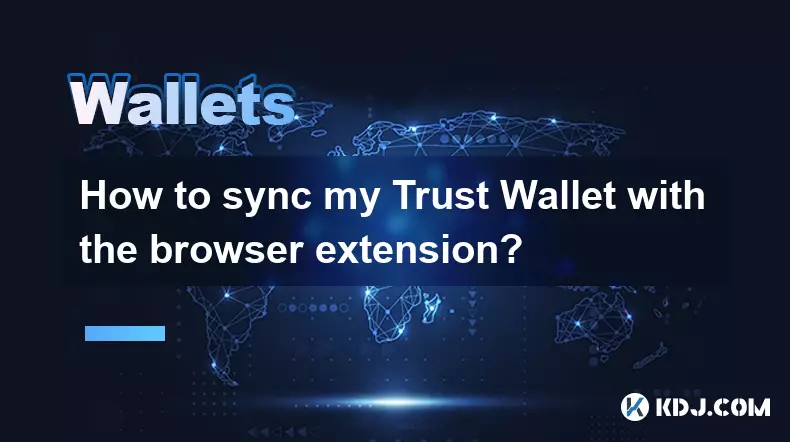
How to sync my Trust Wallet with the browser extension?
Oct 03,2025 at 06:19pm
Understanding Trust Wallet and Browser Extension IntegrationTrust Wallet is a popular non-custodial cryptocurrency wallet that supports a wide range o...
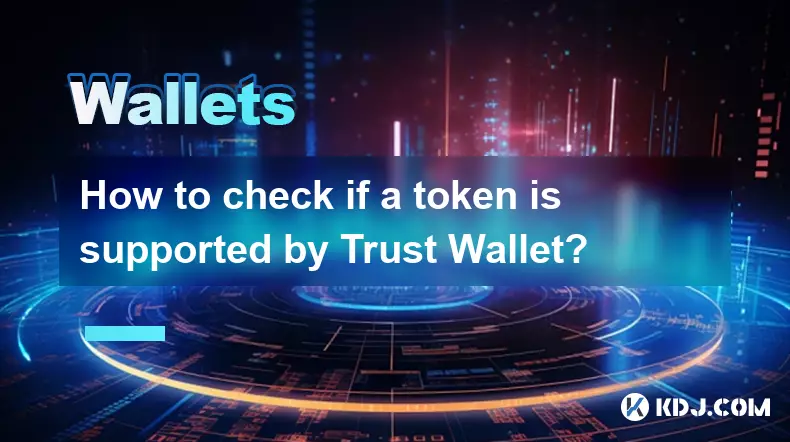
How to check if a token is supported by Trust Wallet?
Oct 04,2025 at 05:18am
Understanding Token Compatibility with Trust Wallet1. Trust Wallet supports a wide range of blockchain networks, including Ethereum, Binance Smart Cha...

How to get the Trust Wallet browser extension?
Oct 01,2025 at 12:37am
How to Access the Trust Wallet Browser Extension1. Visit the official Trust Wallet website through a secure internet connection. Navigate to the downl...

How to interact with a DApp using Trust Wallet?
Oct 02,2025 at 10:00pm
Connecting Trust Wallet to a DApp1. Open the Trust Wallet app on your mobile device and ensure your wallet is unlocked with access to your assets. Nav...
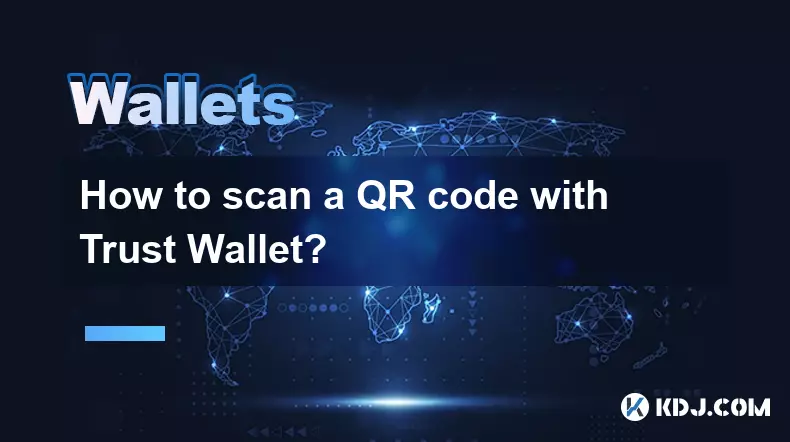
How to scan a QR code with Trust Wallet?
Oct 02,2025 at 03:37pm
Understanding QR Codes in Trust Wallet1. QR codes are widely used in cryptocurrency applications to simplify transaction processes. Trust Wallet lever...

How to find my BEP20 address on Trust Wallet?
Oct 04,2025 at 06:19pm
Understanding BEP20 and Trust Wallet Compatibility1. Trust Wallet is a widely used cryptocurrency wallet that supports multiple blockchain networks, i...

How to sync my Trust Wallet with the browser extension?
Oct 03,2025 at 06:19pm
Understanding Trust Wallet and Browser Extension IntegrationTrust Wallet is a popular non-custodial cryptocurrency wallet that supports a wide range o...

How to check if a token is supported by Trust Wallet?
Oct 04,2025 at 05:18am
Understanding Token Compatibility with Trust Wallet1. Trust Wallet supports a wide range of blockchain networks, including Ethereum, Binance Smart Cha...

How to get the Trust Wallet browser extension?
Oct 01,2025 at 12:37am
How to Access the Trust Wallet Browser Extension1. Visit the official Trust Wallet website through a secure internet connection. Navigate to the downl...

How to interact with a DApp using Trust Wallet?
Oct 02,2025 at 10:00pm
Connecting Trust Wallet to a DApp1. Open the Trust Wallet app on your mobile device and ensure your wallet is unlocked with access to your assets. Nav...

How to scan a QR code with Trust Wallet?
Oct 02,2025 at 03:37pm
Understanding QR Codes in Trust Wallet1. QR codes are widely used in cryptocurrency applications to simplify transaction processes. Trust Wallet lever...
See all articles










































































